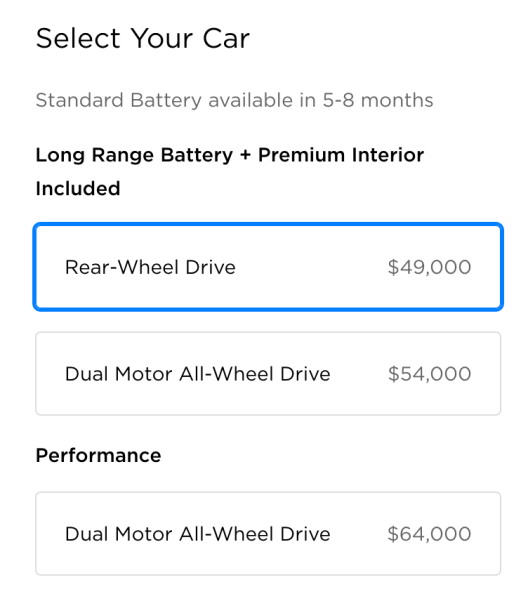Music connects you with others, lifts your spirits, and inspires. Recently, listening to music inspired me to try making music. There is still so much to learn, but I’ve been able to make decent progress despite a quarantine and the obstacles it has presented, by seeking knowledge passed along by musicians online. To continue connecting, I figured I should pass along all I’ve learned so far.
Finding inspiration
When you listen to music, you’re never alone
The title of this article keeps popping into my head during all the quarantining and social distancing brought about by the Covid-19 pandemic. I forgot what the article was even about, but the words are a reminder for me whenever I’m not having a great day, that music can bring people together, even when we’re apart.
You put the headphones on, you’re listening to music, but the music’s still part of the larger social world
Jay Schulkin
Another idea that sticks with me comes from Oak Felder. If you haven’t heard of Oak (I hadn’t before this deep dive into music production), he’s a producer for many popular artists including Nicki Minaj, Alessia Cara, Kelly Clarkson, and John Legend but in this case, the line comes from a video of him talking about the production of the song Sorry, Not Sorry, by Demi Lovato.
Oak says,
A song is a conduit of emotion from one person to another, but in order to accurately depict this emotion, it has to be a snapshot of a moment.
Oak Felder
More succinctly, “A song is a snapshot of a moment.”
And Covid-times are providing quite the moment to snapshot.
Early on we got songs like Level of Concern from Twenty One Pilots talking about an initial uncertainty of the situation, and Quarantine Casanova from Chromeo making light of it. Glass Animals made Quarantine Covers and later, AJR released Bummerland.
But a general theme was musicians wanting to play music.
Martin Garrix played on an assortment of roofs and boats around Amsterdam, Machine Gun Kelly played virtually with Travis Barker and later for aliens, Post Malone played Nirvana, David Guetta played to Miami, Steve Aoki played in a foam pit, and the Preservation Hall Jazz Band played Keep Your Head Up.
It’s easy to see that music isn’t quite the same this year. No shows to play, but plenty of thoughts and emotions to share about trying to figure things out.
I used go to a ton of concerts back when they still happened. I love the energy of the music, the atmosphere of the venue, and the creativity of musicians.
Quick aside. You should be proud of what you like and the things you do. It’s the creativity and uniqueness that makes you, you. Don’t be ashamed of being out of the ordinary or mainstream. Be both. You can contain multitudes.
I love music because I love to see what people create. And this applied to people in all creative professions. I am always amazed by the songs, movies, shows, and books people make. But you don’t have to be a Grammy winning record producer to pursue your interests.
Learning to play
I realized a couple years ago that after countless hours of listening to music and going to concerts, it would be fun to try to make music of my own.
And the good news, I learned, is some of the award winners will walk you through their process for creating their industry recognized art. So yeah, you don’t have a to be a pro, but you can still learn from them.
When you listen to music, you’re never alone. When you make music, you find out if you have schizophrenia.
If music is part of the larger social world, I wanted to be part of the conversation (but had to figure out what I wanted to say).
I have some musical background. I played piano briefly as a child, but didn’t stick with it. I tried guitar but never could progress beyond basic chords. I did play trombone in jazz and concert band throughout high school and middle school. I think picking up bass would have translated better instead of guitar.
I began my musical restart in Winter 2018. I couldn’t read treble and had all but forgotten bass clef. And I couldn’t play piano, but I wanted to be able to.
Since then, I’ve said playing piano is my winter activity because Seattle summers are so amazing. Through quarantine and social distancing I have played more than usual and uploaded 15 songs to Soundcloud, but it’s still tough to sit inside when the weather is so nice. With recent weather making the city look like a scene from Mad Max, staying in has me reflecting on making and listening to music again.
Here’s how I started learning piano and music production.
To set some expectations, my goal is to learn piano, but also understand musical concepts in order to produce songs. I’m also no where near experienced enough to teach people how to do either, so I’ll just pass along the ways I’ve learned how to do things. There are tons of resources out there! These are just a few.
The first book I worked through was the Alfred Adult Course. I made it through the first and part of the second. The Alfred books were great for piano basics, but did not get enough into the theory. I also found I wasn’t very interested in the songs so I wound up going online for music I wanted to play.
I later picked up the Compete Piano Player which I would recommend over the Alfred books.
There are tons of digital resources for piano music, but I found that for piano scores both Musescore and Music Notes to be the most reliable and easiest to just open on a tablet and play from the piano music stand. And generally, if you search for “(song I want to play) piano score”, these two sites will be top results.
With sheet music on stand, I immediately realized I needed to get better at reading the notes. The Music Tutor app is free with ads, and provides a game-ified way to learn notes from the bass and treble clefs tailored to your level of experience. I like it so much that I purchased the option to remove ads. Support those developers!
Beyond just the notes, to better understand key signatures and chords, the Piano Keyboard Guide website is invaluable. Again, it will probably be the first result if you search for “key of (key I’m playing) piano”, but you can always go there directly. This site has diagrams to show the notes in each key and lists chord progressions which is really helpful when coming up with the background for new songs.
With the basics covered I was itching to start moving into music production, but I recognized I had a lot to learn about theory. I also realized, in retrospect, that I was not playing my solos in high school jazz band correctly at all. I should have looked up the notes in key signatures back then. Whoops!
It was about this time that I came across Bill Hilton’s YouTube channel. I learn well by watching people, and watching Bill play while he talked through his lessons jump started my progress. Not only is he inspirational to watch (he’s quite talented), but he is also a great teacher. Bill has a wide range of videos from basics to more advanced topics and he explains each concept in ways any level of piano player could grasp.
Bill also has a book called How to Really Play Piano which has the same detailed information in a well explained format. Plus it’s nice to have something tangible to read.
Bill’s book is the one I was looking for from the beginning, it only took a while to find. The lessons satisfied my desire to take the basics of playing piano and translate that understanding into learning the structure of writing music.
Granted, I am still terrible at playing piano, reading notes, and writing music, but one of my favorite things to do now is pick a random key, figure out a chord progression, then improvise on top of the chords. It’s this type of informal playing that often leads me to making new songs.
Learning to produce
I did say you can learn from Grammy winners, right?
Turns out, if you go to the list of 2020 Grammy winners and scroll down to the “Best Arrangement” winners, you’ll find Jacob Collier, who has kindly recorded a nearly two hour breakdown of his Logic session for his, Grammy winning, All Night Long arrangement. And wow, is he talented. Collier says he put together the initial track in one night after procrastinating for weeks.
Logic, (Logic Pro X) by the way, is Apple’s music production software that allows music producers to input sounds, midi, instruments, and vocals, edit all the inputs together, and create a song. Ableton Live is another popular production software.
I was initially using a trial of Ableton, but I decided to switch to Logic after seeing it’s what Grammy winners use 😜.
Non-Grammy winners (but maybe future Grammy winners?) use Logic too, and there are tons of people on YouTube uploading tutorials and making songs using the software. Although, it really doesn’t matter what software people are using in YouTube videos, you can still learn the concepts of music production from someone using Ableton.
One of my favorite music producers on YouTube is Ocean. He uploads multiple times a week, and shows how to create a simple melody then turn it into a full song.
This brings us back to Oak Felder and his breakdown of the production for Sorry, Not Sorry. Similar to Collier’s breakdown video, Oak pulls up the Logic track for the song and talks through each part of the arrangement, step by step. From the main loop to Demi Lovato’s vocals, Oak shows how each component is edited together into the final song.
These behinds the scenes videos show that musicians put a tremendous amount of thought and effort into getting their songs just right.
Putting in effort and a drive for perfection is best exemplified by Billie Eilish and Finneas talking about making their song, Bad Guy. (Finneas also has another video talking about producing additional songs). The duo makes music in their cramped childhood home, and take great pride in the meticulous details of their music production.
It’s interesting to see how people use different techniques. If you watch the Sorry, Not Sorry and Bad Guy videos, they both touch on the concept of doubling vocals (creating multiple versions of the same vocal track). Oak says he takes Demi’s original vocal track and auto-pitches it up/down to layer harmonies in exact alignment, while Billie and Finneas say they have a rule against pitch shifting, instead opting to painstakingly record each vocal layer separately. But no one knows about it.
Learning to listen
Going into this music creation experiment, I thought that pop songs sounded so easy to make. I learned that coming up with a beat or melody in music is like coming up with a great start-up idea. They’re pretty easy to think of, but execution requires a lot of dedication, learning, and refinement.
I also discovered you don’t need to be able to play like a concert pianist to be able to make songs. You don’t even need to have a piano. Production software like Ableton and Logic Pro X let you “write” the music without any instruments. All you need is a little inspiration and desire to create something new.
A quote that comes to mind from back in my overly philosophical days goes like this:
The more you try emulate others and fail, the more you define yourself.
Me?
Another interpretation I found looking back in my journals is,
Find a someone you admire. Use what you like about them to bring out more of that in you. Use what you don’t like to stay away from those qualities.
A pop psychologist
There is so much to learn from music. The genre and lyrics can impact your emotions, and the production is an artform.
In a similar way that listening to good music can be transportive, playing and creating music, is engrossing and addicting. You can make what you think sounds good. There is a compounding effect. You don’t want to stop.
Outro
Through Covid-times, getting outside to go biking was my daily dose of serotonin. With the Seattle smoke, I’ve nearly lost my mind being inside for days in a row. So to change things up, I’ve now spent an entire afternoon and evening listening to all the music in this post while writing it. The process really has lifted my spirits. And to me, it proves the points: a song is a snapshot of the moment and when listening to music, you are never alone.
Since this has all been about creating, listening, reflecting, and how music affects your mental state, I’ll leave you with the latest Demi Lovato song (she took my Emojion design for the album cover) and a playlist for solo dance parties (and writing blogs).
Coda
Guess this is a good time to plug my Soundcloud 😉
Keep listening 🎧


:no_upscale()/cdn.vox-cdn.com/uploads/chorus_asset/file/9276345/jbareham_170916_2000_0088.jpg)
:no_upscale()/cdn.vox-cdn.com/uploads/chorus_asset/file/9597629/jbareham_171101_2099_A_0104.jpg)



